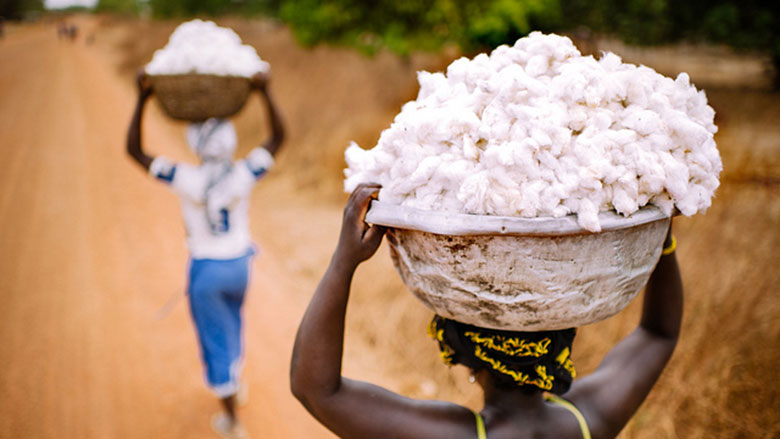Abidjan, May 11, 2017 –– A gap between male and female farmers in agricultural production, both in terms of output and productivity, has been largely documented across Sub-Saharan Africa.
The Africa Gender Innovation Lab (GIL) has produced a body of evidence that identified constraints women farmers face, determined the size and cost of the gap in agricultural productivity, and offered promising policy options and emerging new ideas to test. One of the key findings from GIL’s Levelling the Field report is that labor presents the main barrier to achieving gender equality in productivity.
In a recent mixed-methods study, we investigate and provide explanations for female farmers’ labor constraints within the cotton sector of Côte d’Ivoire, as part of the Côte d’Ivoire Agriculture Sector Support Project’s efforts to increase female participation in cotton production. We first quantify the gender gap in labor usage, then look at the drivers of this gap and how they constrain women’s cotton production and productivity, and finally offer recommendations for policymakers.
